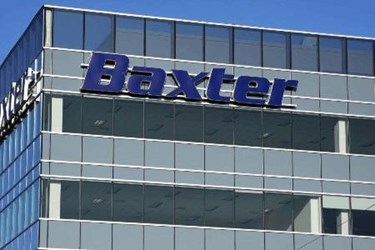Baxter Continues Momentum In Hospital Products, Aimed At Being "Top Quartile" Company

Baxter has continued its year-long momentum with 3 percent growth in the company’s 2016 third quarter, which included double-digit growth in hospital products sales. Baxter CEO Jose Almeida stated that the company has made “significant progress on our strategic journey” toward being a “top quartile company,” and is focused on portfolio management and innovation to accelerate future growth across core businesses and strategic adjacencies.
Of Baxter’s $2.6 billion in Q3 sales, $1.1 billion were in the U.S., representing 6 percent growth domestically and 1 percent growth internationally, with $1.5 billion in sales, according to a press release. Hospital product sales grew by 11 percent, driven by increased U.S. demand, favorable pricing, and the successful launch of the Sigma Spectrum infusion pump. Contract manufacturing was a significant factor in international sales growth.
Increased international demand for continuous renal replacement therapies drove $977 million in renal sales, which included the launch of Baxter’s new automated peritoneal dialysis systems — Amia in the U.S. and Homechoice Claria outside of the U.S. Both systems use the ShareSource connectivity platform, a remote-management system for dialysis that allows patients to receive therapy at home. Baxter recently partnered with Satellite Healthcare, a non-profit organization that provides kidney dialysis and other related services, which will incorporate Baxter’s renal portfolio into Satellite’s product offerings.
“We are pleased with the continued strength across our core franchises as well as our improved financial performance, both of which are reflected in our third quarter results,” said Almeida in a press release. “Given this progress, we are intensifying our focus on portfolio management and innovation to accelerate our efforts to introduce new products and therapies.”
Earlier this year, Baxter hosted an investor’s conference where the company introduced several innovations in its pipeline, as well as strategies to drive financial performance by reshaping existing core businesses. Almeida noted in an earnings call that Q3 figures represented progress in company efforts to exit businesses and legacy R&D projects “no longer aligned with a go-forward strategy.”
“Choices like these are enabling us to refocus our investment on high-potential, high-value R&D and on a more strategic sales and marking opportunities in biosurgery, PD nutrition, pre-mixed injectables and more,” Almedia said. The CEO also commented on the company’s lack of M&A activity, which he attributed to the company’s discipline “in assessing deals with strategic fit and financial merit.”
Over the past year, Baxter has undergone extensive restructuring to bolster the company’s strength and long-term growth potential following the spinoff of its pharmaceutical business in 2015. So far, according to Almeida, Baxter has made “significant progress” on its strategic journey, and the company revised its full-year 2016 earnings guidance to between $1.88 and $1.91 per share, up from the previous guidance of $1.69 to $1.74.
“While we are pleased, we’re not satisfied,” said Almeida during the Q3 earnings call. “We will continue to make progress on our journey to transform Baxter into a top quartile company.”
